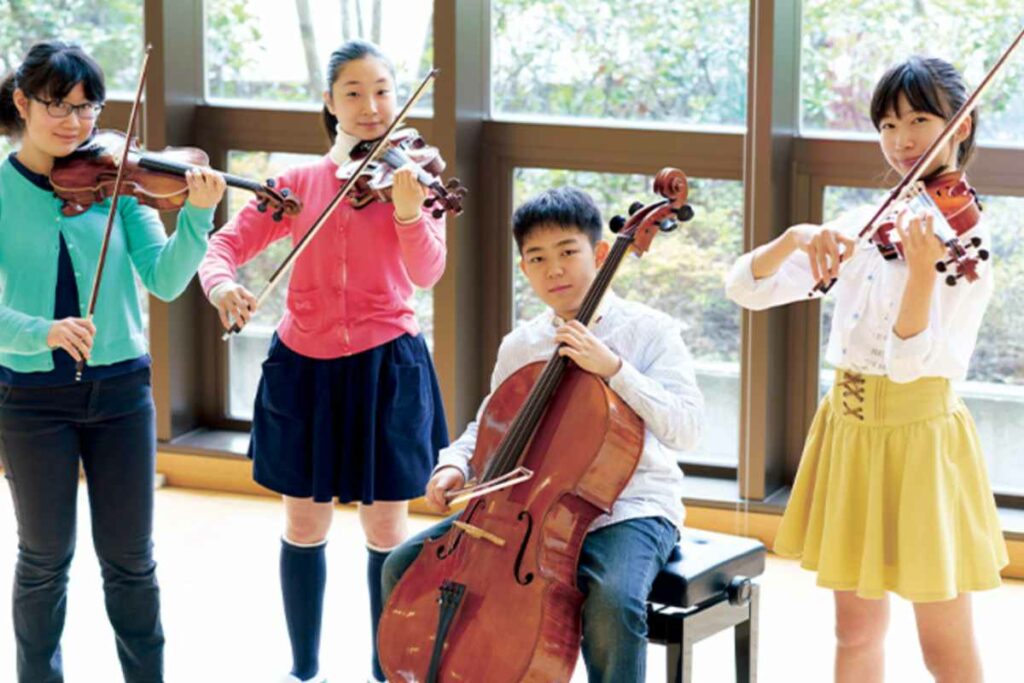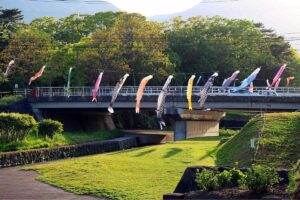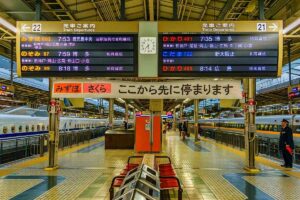Japan’s schools are known for their unique approach to education. We’ll explore some amazing facts about Japanese schools that set them apart from other countries. These facts show how Japan’s education system shapes its students and society.
Japanese schools focus on more than just academics. They teach important life skills and values too. We’ll look at ten surprising things about schools in Japan.
From cleaning classrooms to wearing uniforms, these facts give us a peek into Japanese student life.
Table of Contents
1) Elementary students clean classrooms as part of their daily routine
In Japan, elementary students take part in an unusual daily activity. They clean their own classrooms and other school areas. This practice is a normal part of the school day.
We find that Japanese schools often don’t hire janitors. Instead, the kids do the cleaning themselves. They spend about 10-15 minutes each day on this task.
Students clean desks, sweep floors, and even scrub toilets. They use a special cleaning position called zoukingake. This involves kneeling and using both hands to wipe the floor.
We see that this practice teaches kids to respect their surroundings. It also helps them learn teamwork and responsibility. These are key values in Japanese culture.
2) Schools in Japan have a strong emphasis on respect and manners
In Japanese schools, respect and manners are key parts of daily life. Students learn to bow to teachers as a sign of respect from a young age.
We find that respect is given top priority in Japanese schools. This helps create a culture of politeness and consideration for others.
Students are taught to respect not just teachers, but all elders. This includes older students, even if they’re only a few years apart in age.
Good manners are practiced every day. For example, students clean their own classrooms and school grounds. This teaches them to take care of shared spaces.
These lessons in respect and manners help prepare students for life in Japanese society. They learn skills that will serve them well beyond their school years.
3) Most Japanese schools don’t have janitors; students do the cleaning
In Japan, many schools don’t employ janitors. Instead, students are asked to clean their own classrooms and common areas.
This practice teaches kids to take care of their space and respect their surroundings. Students typically spend about 15 minutes each day tidying up.
They sweep floors, wipe down desks, and even clean bathrooms. This helps kids learn teamwork and responsibility from a young age.
Japanese parents and educators believe this system helps students develop important life skills. It also saves schools money on cleaning staff.
We find that this approach creates a sense of ownership among students. They’re more likely to keep areas clean when they’re the ones maintaining them.
4) Japanese school lunches are nutritious and often include rice, fish, and vegetables
We find that Japanese school lunches are known for their nutritional value and balanced meals. These lunches usually feature a mix of rice, fish, and vegetables, providing students with a well-rounded diet.
The meals are overseen by nutritionists and made fresh daily. This ensures that students receive the right nutrients for their growing bodies.

A typical Japanese school lunch might include a serving of rice or noodles, a protein like fish or meat, and one or two vegetable side dishes. Milk is also commonly provided as a beverage.
We see that this approach to school lunches helps students develop healthy eating habits. It also exposes them to a variety of foods and flavors from an early age.
5) Many schools in Japan conduct earthquake drills regularly
Japan is known for its frequent earthquakes. To keep students safe, schools hold regular earthquake drills.
These drills teach kids what to do when the ground shakes. Students learn to get under desks and hold onto the legs.
Disaster education in Japan starts early. Kids practice these skills from elementary school through high school.
During drills, students also learn how to evacuate buildings safely. They practice staying calm and following teacher instructions.
Some schools use special rooms that can simulate earthquake shaking. This gives students a realistic experience.
These drills help prepare Japanese students for real emergencies. They know what to do when an earthquake strikes, whether at school or elsewhere.
6) Japanese schools often require students to wear uniforms
In Japan, most schools have a dress code that includes uniforms. Over 90% of Japanese public schools require students to wear uniforms. This tradition dates back to the Meiji era in the late 19th century.
The two most common types of school uniforms in Japan are gakuran and sailor-style. Gakuran uniforms are typically black and worn by boys, while sailor-style uniforms are usually worn by girls.
Japanese school uniforms often include specific components like blazers, skirts, and ties. Many schools have their own unique uniform designs that reflect their history and values.
The dress code in Japanese schools is generally strict. Students are expected to follow the rules closely, with only minor modifications allowed in some cases.
7) Japanese students often participate in club activities after school
In Japan, many students take part in club activities called “bukatsu” after their regular classes end. These clubs are a big part of school life and culture.
Students can choose from many different clubs. Some focus on sports like baseball or soccer. Others are about arts, music, or academics.
While joining a club isn’t required, most students do. It’s a way to make friends, learn new skills, and have fun.

Club activities happen most days after school. Students often spend a lot of time in their clubs. Some even meet on weekends or during school breaks.
We find that these clubs help students grow. They learn teamwork, discipline, and how to manage their time. It’s a unique part of the Japanese school experience.
8) Students learn moral education called ‘Doutoku’ in schools
In Japan, students take part in a unique subject called ‘Doutoku’. This moral education class is an important part of the curriculum in elementary schools.
‘Doutoku’ lessons focus on teaching values, character, and ethics to young students. We find this approach interesting because it treats moral development as a core academic subject.
The classes cover topics like respect, kindness, and social responsibility. Students learn through discussions, stories, and activities that help them think about right and wrong.
While some might think morals should only be taught at home, Japan sees value in addressing it at school too. This helps create a shared ethical foundation for all students.
‘Doutoku’ has been part of Japanese education for many years, with roots going back to before World War II. It continues to play a key role in shaping young minds today.
9) The school year in Japan starts in April and ends in March
In Japan, the school year begins in April, unlike many Western countries where it starts in September. This timing aligns with the start of spring and the blooming of cherry blossoms.
The Japanese school year is divided into three terms. The first term runs from April to July, followed by summer break. The second term starts in September and ends in December.
The final term begins in January and concludes in March. This unique schedule has been in place since the Meiji period in the 19th century.
We find that this April start date isn’t just for schools. Many companies and organizations in Japan also begin their fiscal year and new employee intake in April.
10) Shoes are not allowed inside classrooms; students wear indoor slippers
In Japanese schools, we see a unique custom that might surprise visitors. Students don’t wear their regular shoes inside classrooms. Instead, they change into special indoor slippers called uwabaki.
This practice helps keep the school clean and germ-free. Students leave their outdoor shoes in lockers near the entrance and put on their uwabaki before entering the main school building.
The uwabaki are usually white or light-colored with the student’s name on them. They’re comfortable and easy to slip on and off. This indoor footwear is not just for students – teachers and visitors also follow this rule.
We find this custom reflects Japan’s broader culture of removing shoes when entering homes and many buildings. It’s one way Japanese schools teach kids about cleanliness and respect for shared spaces from an early age.
Education System Structure
Japan’s education system has a unique structure with distinct stages. We’ll explore the key components from primary through higher education.
Primary Education
Primary education in Japan starts at age 6 and lasts for 6 years. Elementary schools focus on quality over quantity. Students learn core subjects like math, science, and Japanese language.
Classes are typically large, with about 30-40 students per teacher. Kids wear uniforms and often have the same backpacks with school emblems.
A unique aspect is that students serve lunch to each other. This practice teaches responsibility and teamwork. After-school clubs are popular, allowing kids to explore interests beyond academics.
Secondary Education
Secondary education is split into two parts: junior high school (3 years) and high school (3 years). Junior high is mandatory, while high school is optional but widely attended.
In junior high, students face increased academic pressure. They study advanced subjects and prepare for high school entrance exams. Romantic relationships are discouraged, with strict rules against public displays of affection.
High school students choose between academic or vocational tracks. Academic high schools prepare students for university, while vocational schools focus on job-ready skills. Extracurricular activities remain important, with many students joining sports teams or cultural clubs.
Higher Education
Higher education in Japan includes universities, junior colleges, and vocational schools. Universities typically offer four-year programs, while junior colleges provide two to three-year courses.
Admission to top universities is highly competitive. Students often attend cram schools to prepare for entrance exams. Once admitted, university life is generally less intense than high school.
Many Japanese companies recruit directly from universities. This system puts pressure on students to attend prestigious schools for better job prospects. International exchange programs are becoming more common, encouraging global perspectives.
Cultural Aspects of Japanese Schools
Japanese schools have unique cultural elements that set them apart. These traditions shape students’ experiences and foster a strong sense of community.
School Uniforms
School uniforms are a key part of Japanese school culture. Most schools require students to wear specific outfits. Boys often wear black or navy suits with stand-up collars. Girls typically wear sailor-style uniforms with pleated skirts.
Uniforms help create a sense of unity among students. They also reduce distractions and minimize social differences. Many schools have summer and winter versions of their uniforms to suit the changing seasons.
Some schools allow small personalization touches. Students might add unique pins or bags to express themselves. Uniform rules can be strict, with teachers checking for compliance.
School Festivals
School festivals are exciting events in Japanese schools. They usually happen once a year, often in autumn. These festivals showcase student talents and bring the community together.
Classes work on projects to display during the festival. Some might set up food stalls or create art exhibits. Others put on plays or music performances. It’s a chance for students to show creativity and teamwork.
Festivals are open to families and the public. They give outsiders a glimpse into school life. Students take pride in showcasing their hard work and school spirit.
These events also help students develop leadership and organizational skills. Planning and running festival activities is a big responsibility that students take seriously.
Unique School Activities
Japanese schools have some interesting activities that set them apart. Students take part in tasks that help build character and foster a sense of community.
Cleaning Duties
In Japan, students clean their own schools. This practice is called “o-soji” and usually happens at the end of each school day. We find this teaches responsibility and teamwork.
Students sweep floors, wipe down desks, and even clean bathrooms. They work in small groups, rotating tasks throughout the week. This helps keep the school tidy and cuts down on janitorial costs.
The cleaning time is short, often just 15-20 minutes. But it makes a big difference. Kids learn to take pride in their school and respect public spaces.
Club Activities
After-school clubs are a huge part of student life in Japan. We see most students join at least one club. These groups meet several times a week, often including weekends.
Popular clubs include:
- Sports (baseball, soccer, tennis)
- Music (choir, band)
- Art
- Science
- Drama
Clubs help students make friends and learn new skills. They also teach dedication and time management. Many students spend hours each day on club activities.
Some clubs can be quite intense. Sports teams might practice daily, even during school breaks. This level of commitment is normal and expected in Japanese schools.
Frequently Asked Questions
Japan’s education system has many unique aspects that set it apart. Let’s look at some key questions about how Japanese schools operate and what makes them special.
What unique characteristics define the Japanese education system?
The Japanese education system places a strong emphasis on respect and manners. Students clean their own classrooms as part of their daily routine. This teaches responsibility and teamwork from a young age.
Most Japanese schools don’t have janitors. Instead, students work together to keep their school clean and tidy. This practice helps build a sense of ownership and pride in their learning environment.
How does the Japanese school system structure differ by student age?
In Japan, compulsory education lasts 9 years. This includes 6 years of elementary school and 3 years of junior high school. After that, most students go on to high school, even though it’s not mandatory.
The school year in Japan starts in April and ends in March. Students typically attend classes Monday through Friday, with some schools also holding classes on Saturday mornings.
In what ways does the Japanese education system contribute to student happiness?
Japanese schools focus on more than just academics. They provide nutritious school lunches that often include rice, fish, and vegetables. These meals help students stay healthy and energized.
Many schools in Japan conduct regular earthquake drills. This helps students feel safe and prepared, which can reduce anxiety about natural disasters.
What are some compelling facts about the Japanese education system that set it apart internationally?
In Japanese schools, students wear the same backpack called a “randoseru.” These bags often have reflective stripes for safety, as many students walk or bike to school.
Japanese schools have strict rules about personal relationships. Hugging and kissing are banned on school grounds, even as friendly gestures.
How is the performance of Japan’s education system reflected in global rankings?
Japan consistently ranks high in international education comparisons. Japanese students often score well in math, science, and reading on global tests.
The high school graduation rate in Japan is over 95%. This shows the strong emphasis placed on education in Japanese society.
Why is the Japanese approach to education often considered superior to others?
The Japanese education system balances academic rigor with character development. Students learn important life skills like cleanliness and responsibility alongside their studies.
Japanese schools also focus on group harmony and cooperation. This approach helps prepare students for working well with others in their future careers.
- 5 Unexpected Tourist Traps in Japan That Could Blow Your Budget
- Are Shinkansen Trains Still the Fastest: Comparing Global High-Speed Rail Systems
- Best Golden Week Destinations In Japan (Top 10 Locations)
- A Traveler’s Guide to Honshu (Japan’s largest Island)
- Best Hanami Destinations In Japan (Top 10 Locations)
- Eki Stamp Book (Gotta Collect Them All!)









